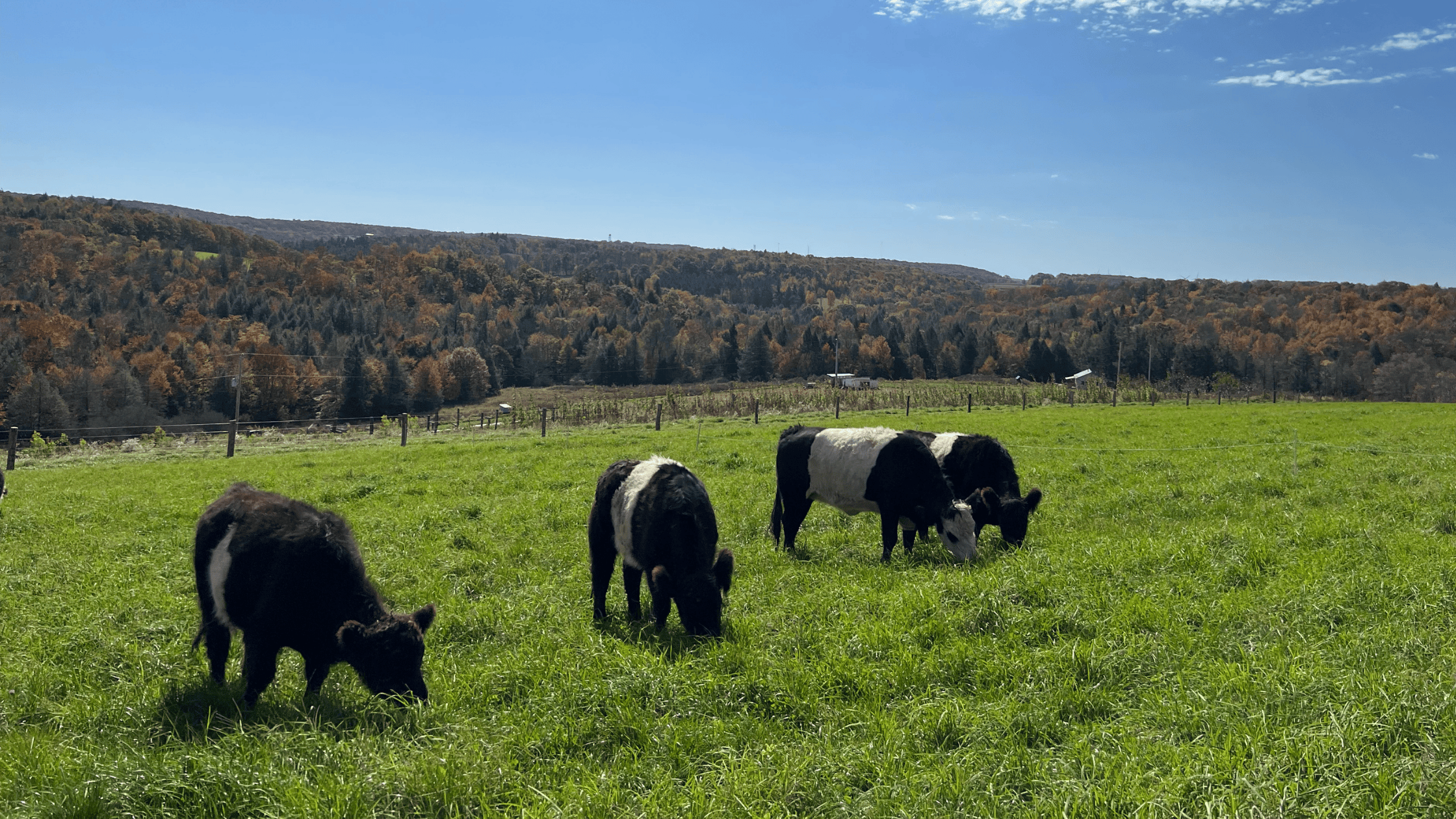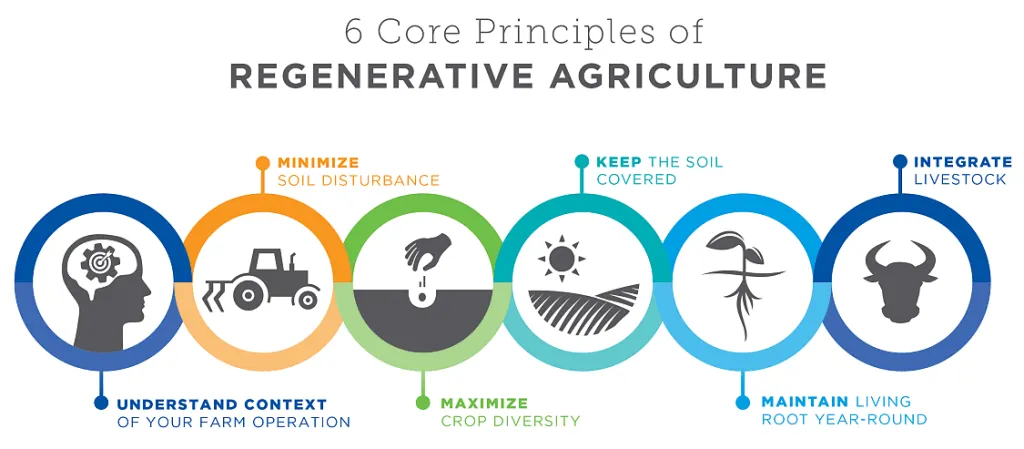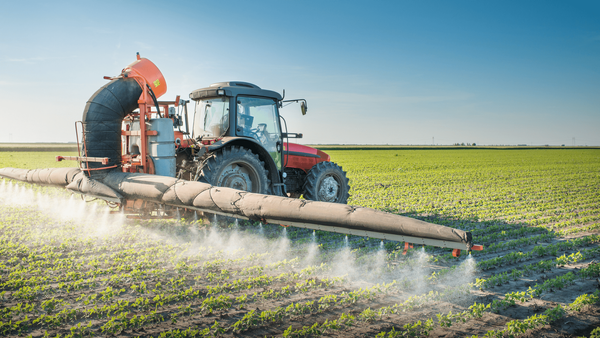The Regenaissance's Resources to Regenerative Agriculture
"Regenaissance's Resources" highlights regenerative agriculture's role in healing the earth through documentaries like "Kiss the Ground" and books like "Dirt to Soil," emphasizing soil health and biodiversity.

Our food system will never change if we don't support local farmers and ranchers. I will included a list of links that include maps to find farms, ranches, and raw dairy along with questions to ask them either at a farmer's market or on their farm/ranch.
What You'll Learn:
✔️ The fundamental concepts that are backbone of regenerative farming systems
✔️ Our recommended documentaries, books, Youtube channels, and podcasts.
✔️ Hands-on experiences to implement what you've learned on real farms
6 Core Principles of Regenerative Agriculture

- UNDERSTAND CONTEXT OF YOUR FARM OPERATION
Begin with thorough observation and assessment of your land's unique characteristics including climate patterns, soil types, water flow, and ecosystem functions. Making decisions based on your specific context ensures regenerative practices work with, rather than against, your farm's natural tendencies. - MINIMIZE SOIL DISTURBANCE
Reduce or eliminate tillage to preserve soil structure, fungal networks, and microbial communities that form the foundation of soil health. Undisturbed soil builds aggregate stability, improves water infiltration, and maintains carbon sequestration. - MAXIMIZE CROP DIVERSITY
Incorporate multiple plant species through intercropping, diverse rotations, and companion planting to mimic natural ecosystems. Greater plant diversity creates resilience against pests and disease while providing varied root structures that access different soil nutrients and depths. - KEEP THE SOIL COVERED
Maintain protective ground cover through mulch, cover crops, or managed plant residues throughout the growing cycle. Covered soil resists erosion, retains moisture, moderates temperature extremes, and suppresses weeds while creating habitat for beneficial organisms. - MAINTAIN LIVING ROOT YEAR-ROUND
Ensure living plants with active root systems remain in the soil during all seasons to continuously feed soil biology. Living roots release exudates that nourish microbial communities and build soil carbon while extending the photosynthesis window throughout the year. - INTEGRATE LIVESTOCK
Incorporate animals through managed grazing to stimulate plant growth, cycle nutrients, and convert plant material into valuable manure. Well-managed livestock complete the nutrient cycle while providing additional income streams and ecosystem services.
List of Resources to Get Started
Documentaries
- Biggest Little Farm
- Kiss the Ground
- Farmer's Footprint
- Fantastic Fungi
- The Pollinators
- Sacred Cow
- Clarkson's Farm
- To Which We Belong
Books
All the below titles are available for purchase on Amazon
- Dirt to Soil
- City Chicks
- Defending Beef
- The CAFO Reader
- Holistic Management 3rd Edition
- The Unsettling of America
- Sacred Cow
- Cows Save the Planet
- The Soil Will Save Us
- Grass, Soil, Hope
- Growing a Revolution
- For the Love of Soil
- Call of the Reed Warbler
- Dirt The Erosion of Civilizations
- What Your Food Ate
- Gaining Ground
- Gaia's Garden
- The Worst Hard Time
- A Bold Return to Giving a Damn
- Braiding Sweetgrass
- The Regenerative Grower's Guide to Garden Amendments
- Quality Agriculture: Conversations About Regenerative Agronomy
- Plowman's Folly
- The World According to Monsanto
Youtube Channels
Podcasts
- Meat Mafia
- Down to Earth
- Discover Ag
- Ground Work
- Regeneration Rising
- The Thriving Farmer Podcast
- Regenerative Agriculture Podcast by John Kempf
- Joe Rogan: Joel Salatin, Will Harris episodes
Getting Your Hands Dirty
The best way by learning regenerative agriculture is by doing. Here are some ways to get hands-on experience.
- Visit farmer’s markets, and converse with the farmers/ranchers. Show your interest, ask questions about their operation, and want to visit/volunteer. You learn so much just by doing and observing
- Google local ranches/farms and call them up. Similar to #1, just show your interest but be respectful. You can volunteer a weekend or just visit and have them show you around their property
- WWOOF - World Wide Opportunities on Organic Farms. This is what I’m doing and will be doing for all of 2023. It is not paid, however, you get housing & food in exchange for your labor. This can be a good option because the length of stay depends upon the times requested from the owner and also you. It can be a day, weekend, week, or for me, 2-3+ months at a time.
- Quivira Coalition - they apprenticeships where you are placed with a mentor and work over an 8-month period
- Greg Judy Grazing School - I have heard nothing but great things about Greg Judy’s program. He teaches how to work with livestock and rebuild your soil
- Lastly, utilizing Google. There are so many programs, farms, and ranches out there looking for folks. ~1% of Americans work in agriculture, we need all the help we can get.
That’s it. I wanted to put together some helpful resources to get you started.
Thank you for reading,
Ryan





